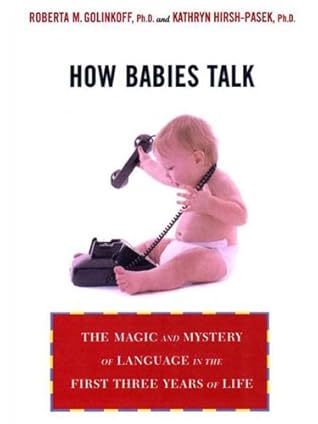Kindle Notes & Highlights
Read between
March 13 - May 11, 2022
English uses what is referred to as a strong-weak alternating pattern, as in the noun version of “RECord.” Maybe infants recognize that in their language most of the words have a strong-weak pattern. If they do, they might assume that words start with the strong syllables that they hear in the flow of speech.
Some important development between six and nine months of age allows infants to analyze speech into the language units called words. They attend to those cues—the sounds, the order of the sounds, and the stress patterns—to locate the building blocks of language. Babies are also storing the words that they find so that they can put them to use later on. It’s as if babies are working hard to create a store of words that can later be infused with meanings.
Shortly after birth, Japanese babies can tell the difference between the sounds r and l, just as American babies can tell the difference between the three Hindi d sounds. Around nine or ten months of age, however, as Hans and Harry are analyzing their own languages’ sound, sound sequences, and stress patterns, they become less sensitive to sounds not found in their native language.
This loss of sensitivity to the complete menu of sounds in the world’s languages is a robust finding. In fact, this loss of the ability to tell the difference between (and then produce) non-native sounds is one of the main reasons that babies are better language learners than we are as adults.


